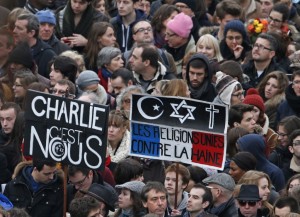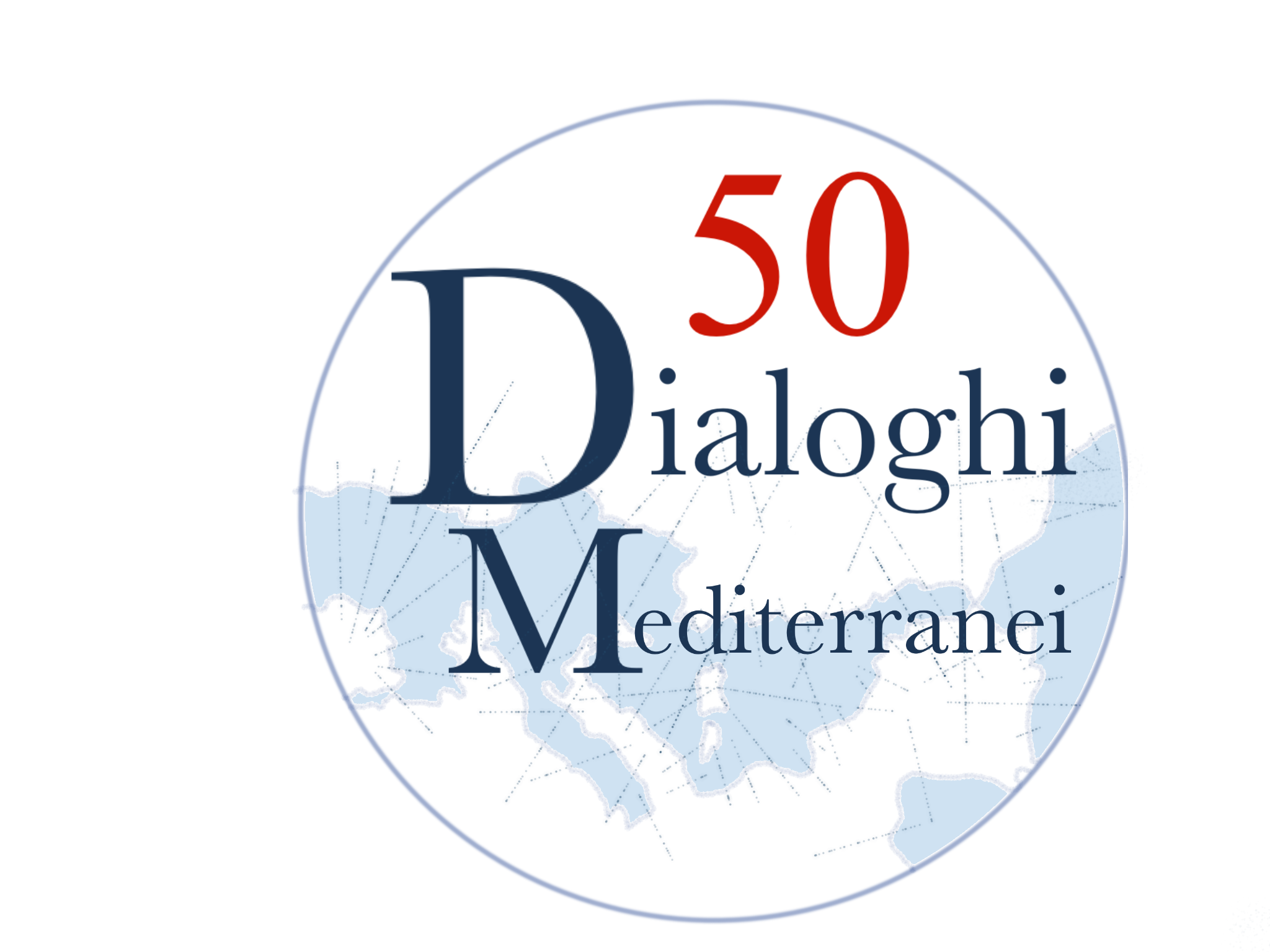The history of French migratory flows is usually traced back to the French colonial past in Morocco, Tunisia and Algeria, but these have also developed for internal causes, such as the need for foreign labor to cope with the demographic crisis, caused during the twentieth century above all by the two world wars, during which those who had enlisted in the French army without being born in France had already a central role (Viet, 1998).
During the second decade of the 19th century, France experienced a strong industrial growth, with an increase in the demand for foreign labor, initially only for short periods, then, thanks also to migration policies, as final appropriations (Bardet, 1999).
Migration policies in France are historically based on the assimilation of other cultures to the French one that we can define as a unilateral integration. One of the basic requirements for becoming a French citizen is the knowledge of the French history, of the French language, but it is equally binding to recognize ourselves entirely in the French culture, leaving no space for traditional, linguistic and cultural customs of the country of origin, a kind of “memory deletion” of all that the immigrants identified themselves with until they arrived in the host society. In return, the French state recognizes to all civil and political rights (Withol De Wenden C, 1990).
With the recognition of ius soli, the French nation proves that to be a French citizen there are no bonds of either ethnicity or color, but only a necessary identification of oneself as French and the recognition of French culture as one’s own culture. This form of recognition had already been used in the colonial period, during which it was required for the occupied populations to identify themselves with the French culture, in exchange for the full recognition of their social and political rights.
Therefore, France recognizes and directs the assimilation of foreigners in an institutional manner, and it is easy to notice it both in public schools and in administrative offices. Near the end of the nineteenth century, foreigners residing in the French territory were almost a million, thanks to the economic growth and the demand for foreign labor by the industry. With the outbreak of the First World War the demand increases, to replace the workers who were called to the front, where about 11% of adult males lose their lives, causing a drastic reduction of the population (Noiriel, 2007). In response to the demographic crisis that broke out between the two wars, there are about 300,000 new arrivals from countries such as Greece, Spain, Portugal and, after the world war, also from Italy.
After the first world war France had about 3 million immigrants contributing to the reconstruction of the country, thanks also to the policy followed by governments to not limit the flow, conceived as a primary need not only for the reconstruction of the country, but also for the demographic growth.
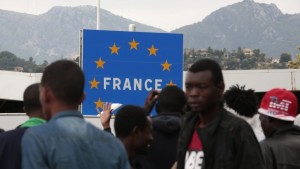 The establishment of the first Société d’immigration
The establishment of the first Société d’immigration
As a consequence of the massive request for immigration into the French territory, in 1924 some business, industrial and agricultural organizations formed the Société générale d’immigration (SGI) to coordinate the procedures for the selection and entry of foreigners. The State therefore delegates to private interest groups the whole procedure of coordination and recruitment of foreign workers in France. According to estimates from 1924 to 3030 about 406.950 foreigners are recruited, most of whom came from Belgium, Austria, Czechoslovakia, Yugoslavia, Romania, Italy, Greece, Lithuania (Weil, 1995).
The 1929 crisis has repercussions on the whole industry, agriculture, the banking system, and trade, causing a major drop in production and very high unemployment, not only in the United States, but also in Europe. The decrease in production and the very high rate of unemployment inevitably also have an effect on immigration, which is significantly reduced until the outbreak of the Second World War. This entails a change of course in the French policy of control of flows and a xenophobic sentiment of the French population, who felt threatened by foreign workers, willing to work even in bad conditions.
With the approval of the Nationality Code, a new way to control and manage immigrant flows is sought, which also continues during the Vichy government, in which French citizens of foreign origin are banned from accessing public functions, thus beginning an operation of denaturalization of the citizenship, which is accompanied by a new repression also against refugees, openly denying the egalitarian principles of the 1789 revolution. We can remember the case of the Jews, to who the access public functions, French citizenship and the possibility of pursuing certain professions, such as that of lawyers and doctors are forbidden.
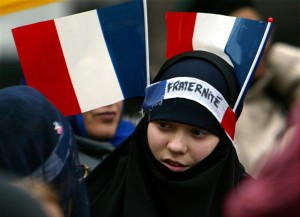 The new code for immigration (CESEDA)
The new code for immigration (CESEDA)
In the aftermath of World War II we return to encourage immigration, De Gaulle himself supports the need for foreign labor in the absence of men needed for the reconstruction of the country. His idea was to support a selective and assimilationist policy of new migratory flows, focusing on their provenance and their degree of integration into the French culture. This leads to the adoption of the CESEDA immigration code of 1945, which regulates the entries and stay of foreigners and asylum applicants in the French territory.
The first committee for the population and the family of Georges Mauco (1945)
In 1945 the establishment of the Committee for Population and the Family begins, a body with the task of informing the government on the needs and problems of migratory populations. Leading the committee was Georges Mauco, who expressed the need to reformulate a new immigration and naturalization policy for foreigners that would adapt and defend the interests of the French national unity. With these ideas the selective recruitment of immigrants based on their region of origin begins. De Gaulle chooses to favor immigration from northern Europe to support a young, peaceful immigration also able to work. Italy was one of the beneficiary countries of this new political line, in fact in the immediate post-war two Italian labor recruitment offices are opened in Milan and Turin, which is followed by a policy of privilege towards Italian immigrants also with regard to family reunification (Barou, 1984). In the following years there is a strong growth of citizens coming from the colonies, above all Algerians employed in the seasonal, but also permanent jobs, in the enterprises of the north of the country, which in less than ten years reach about 350.000 regular entries (Bonet, 1976; Costantini, 2009).
Many French citizens disapprove the new opening towards the countries initially considered non-preferential, especially those in the northern areas of Africa, which were believed to put at risk the French culture and the nation itself, building ethnic minorities difficult to assimilate. The government thus tries to limit family reunification requests from non-preferential countries, but a significant decrease in entry flows from Algeria occurs only with the Franco-Algerian war of 1954 (Sayad, 2002).
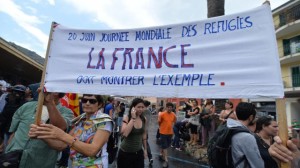 The 1973 energy crisis and the ad hoc decree against migratory flows (1974)
The 1973 energy crisis and the ad hoc decree against migratory flows (1974)
In the years of the energy crisis of 1973, which overwhelms all the countries importing oil, there is a consequent increase of unemployment rate that affects, in France as in many European countries, also migration policies: only those immigrants who had already formed a family and skilled workers in sectors that are important for the economic growth of the country could remain (Simone, 2002).
In the years between 1978 and 1989, Valéry Giscard d’Estaing presented a draft law on repatriations, also forced, of immigrants from non-preferential countries; it proposed a provision that had the impression of being directed against the Algerians, which provided for the non-renewal of the residence permit, for annual fees, to those who were unemployed for more than 6 months. The proposal recommended that around 500,000 Algerians were expelled from France in 5 years (Schor, 1998).
However, the decree went against the European Convention for the protection of human rights and fundamental freedom of 1950, signed, among others, by France itself. In particular, Article 8 of the Convention is very clear regarding the issue of family reunification:
«Article 8
1. Everyone has the right to the respect for one’s private and family life, one’s domicile and correspondence.
2. There can be no interference by a public authority in the practise of this right unless such interference is provided for by law and constitutes a measure which, in a democratic society, is necessary for national security, for public security, for the economic well-being of the country, for the defense of order and for the prevention of crimes, for the protection of health or morals, or for the protection of the rights and liberties of others».
 The Eighties, the right-wing project: the Pasqua law
The Eighties, the right-wing project: the Pasqua law
At the beginning of the Eighties, the propaganda of the right-wing electoral campaign for the 1983 elections put the accent above all on the citizenship granted to the children of immigrants, once again with a specific reference to the second generations of Algerians born in France. The battage leads Jean-Marie Le Pen’s extreme right party to more than 10% of the polling stations. In this period, for the first time, second generations of immigrants were actively approaching the political world, claiming their rights not only to feel to be part of the French nation, but also to be recognized as subjects that play a decisive role in the social and political life. of the country. This gives rise to a new political performance by the left government, which proposes a residence permit for ten-year for workers, as well as the establishment of a single residence title.
In the legislative elections of 1986 the Regrouping for the Republic (the coalition of the right-wing and ex-Gaullist parties) won the elections, thanks also to an electoral campaign focused mainly against immigrants.
An exemplary measure was the so-called Pasqua law of 1986, thanks to which the prefects (and no longer the judges) are the ones who deal with the forced repatriation of irregular immigrants, accompanying them for threat to the public order, and the limitation of renewal of the ten-year stay. In 1986 thousands of students oppose themselves to the governmental policies on education and citizenship; during the elections of 1988, with the electoral victory of the left-wing and its allies, migration policy changes.
The abrogation of the Pasqua law and the new Joxe law
The new government presided over by François Mitterrand repeals the Pasqua law and lands on the Joxe law. After years of proposals and political negotiations, finally in 1993 the naturalization reform is approved: it is necessary to manifest the will between 16 and 21 years, while in case of marriage two years of cohabitation are needed (Costantini, 2009).
The Balladaur government and the return of the Pasqua law (1993)
In 1993 new legislative elections were held, won by the center-right wing. The new head of government, Balladur, proposes to return to the Pasqua line as a restrictive move on extended residence permits and family reunifications (Bussetta, 1993).
On 6 November 1996 Debré proposed a new immigration law, approved by the Assembly on February 26, 1997, in which on one hand considered the regularization of certain categories of foreigners, on the other it strengthened the power of the police, weakening the judicial authority.
In 1997 new elections were held, won by the left-wing together with the communist parties (Calcalaterra, 1998; Chemillier-Gendreau, 1998). Jospin immediately declares the intention to send to the prefects a circular letter containing the request to analyze case by case the irregular situations triggered by the Pasqua-Debré laws (Taieb, 1998).
The 2006 law and immigration reform
The new 2006 law attempts to promote selective immigration, adapting migratory flows to the country’s economic growth needs.
The concession of the “welcome and integration contract”, contained in the reform, considered that the right to enter French territory should be granted to children between 16 to 18 students, or with special potential qualifications, on the condition that they showed they were willing to remain there permanently, with the signing of the civic agreement and the attainment of complete linguistic training. Any foreign citizen wishing to enter and settle in the French national territory had be able to demonstrate that they wanted to integrate themselves, starting from the respect of the principles and the knowledge of French history and language.
Another important part of the reform is focused on the regulation of economic immigration, through the assignment of a specific stay, valid for three years, designed for the support and integration of foreign talents, able to contribute decisively to the economic, social, scientific, cultural and sporting development of the nation.
For workers who have a contract of at least one year, the carte de sèjour temporaire is issued, the duration of which depends on the duration of the employment contract.
With the new rule, to apply for family reunification it’s necessary to have certain requirements, starting from a guaranteed minimum income. The inclusion of this legislation is much debated, demonstrating how much the issue of family bond and the possibility of reunification for the foreign population is a considerable problem.
For people from countries with political crises that do not ensure the authenticity of the deeds, a simple family certificate or a declaration of the family connection isn’t enough, but DNA testing is necessary. Once the reunification has been obtained, the children of the immigrants have the obligation to sign the above-mentioned welcome and integration contract with the state.
Measures to oppose illegal immigration are strengthened: if in 2002 there were 10,000 expulsions, in 2005 they increased to 20,000, in 2006 up to 24,000. Following the approval of the reform, in the years 2007-2008 the expulsions still increase, reaching 29.729 immigrants; in short, a growth of 80% of the expulsions only in 2008, compared to 2006 (Costantini, 2009).
In 2006 the admission exceptionnelle au sèjour was also approved, which is a regularization on an exceptional basis, following a knowledge and assessment of the immigrant situation by the prefects.
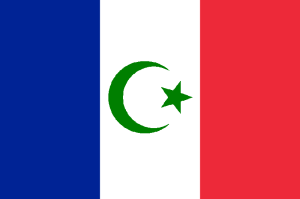 Limits of the French model: Sarkozy and the Roma policy of expulsion, august 2010
Limits of the French model: Sarkozy and the Roma policy of expulsion, august 2010
The case of the Roma ethnic population is emblematic for understanding the limits and possibilities of the French model. At the beginning of August 2010 the Sarkozy government issued a ministerial circular letter addressed to the prefects asking for the evacuation of the 600 Roma camps currently present on the French territory and the expulsion of irregular Roma, for reasons of public security. Approximately 700 people are repatriated to Romania and Bulgaria within a month. The aforementioned circular letter did not go only against the fundamental principles of the French Republic and the Declaration of the Rights of Man and of the Citizen of 1789, but also against articles 14 and 18 of the treaty of the European Union about the free movement of European citizens.
The mass expulsions of European Roma citizens are accompanied by an economic reward, for which each adult is offered 300 Euros for repatriation and in some cases even a thousand Euros to entire families, to encourage a voluntary return.
A member of the European Parliament, Renate Weber (ALD, RO) regarding these voluntary repatriations of the Roma people declares:
«France is using tricks: they call it voluntary repatriation, while it’s a clear violation of the European and international law».
Ultimately, the Sarkozy government saw in the Roma people a community that creates problems of public security and that does not want integrate themselves according to the norms and customs of the French model.
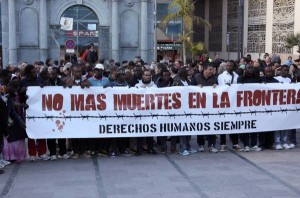 An example of Roma inclusion and integration policies in Spain
An example of Roma inclusion and integration policies in Spain
The Spanish example is emblematic for the difference with which the issue of the Roma communities was dealt with, since unlike France and the European States that have dealt this with policies focused on non-recognition and evictions, Spain has managed to solve the integration problem. According to many surveys and publications, only Spain houses about 970 thousand people of Roma ethnicity, about 2% of the entire population, who are called gitanos or gypsies, without a negative meaning; the gypsies themselves share this denomination with pride and feel like gypsis and at the same time Spaniards.
There is much talk in various European countries of the poor inclusion of Roma communities in the host society: the French case, but also the Italian one, show that voluntary or mandatory repatriation, behind an economic reward, does not solve any of the social problems that persist. Returning to Spain, according to the report of the European Union Agency for Fundamental Rights of 2009, 92% of the Gypsies live in apartments or single houses of which half is also the owner, as opposed to what happens in France and Italy, where more than 80% live in shacks or degraded apartments. This happens thanks to a universal welfare, with equal opportunities for housing, in this way the gypsy is evaluated not as belonging to his or her ethnic community, but as belonging to the social groups with greater economic difficulties.
Another important part of this model of integration is the inclusion in the education of children, inclusion in the health service and access to the work of adults belonging to these communities. This form of insertion has the primary aim of promoting and improving the life of the Gypsies, and through this improvement integration.
50% of the Gypsies in Spain have a regular job thanks to employment policies.
As for education, almost all Gypsy children are enrolled in elementary schools and distributed in various schools close to their place of residence and are accompanied on this path by social workers and mediators.
Every year the Spanish government invests about 36 million Euros for this integrative system, which has succeeded in making only a small minority of the Gypsy community live in poor conditions and in shanty towns (Cala, 2010).
Dialoghi Mediterranei, n. 33, settembre 2018
[*] Il presente contributo si articola in tre parti. In questo numero si pubblica la seconda parte. La prima parte è stata pubblicata sul n. 32. La terza e ultima sul numero successivo.
Abstract
All’interno dell’Unione Europea ci sono diversi Stati che hanno varato leggi, spesso seguendo diversi paradigmi, per far fronte non solo all’aumento dei flussi migratori, ma anche per favorire l’integrazione e la partecipazione degli stessi migranti nella vita socio-politica ed economica. Negli ultimi decenni, l’immigrazione in Europa è diventata una questione di importanza primaria e strategica per la definizione sia delle politiche interne che delle relazioni esterne dell’Unione. La progressiva risoluzione di importanti gruppi nazionali ed etnici pone importanti sfide economiche, sociali e culturali, alle quali finora le politiche attuate hanno risposto solo in parte. Concetti guida come l’integrazione, l’assimilazione e il rispetto per la diversità continuano a faticare a trovare un’adeguata realizzazione nelle politiche di accoglienza degli Stati europei.
A questo proposito, una vera rivoluzione in questo campo è stata la realizzazione dei “principi base comuni” del 2004, che hanno reso gli Stati membri consapevoli del rispetto dei diritti fondamentali, della non discriminazione e delle pari opportunità per tutti, destinata a diventare in seguito una semplice “agenda comune per l’integrazione”. In questo contesto, va ricordata la decisione del Consiglio e del Parlamento europeo n. 1983/2006 che ha proclamato il 2008 Anno europeo del dialogo interculturale.
Con questa ricerca intendiamo analizzare le normative riguardanti la migrazione dei governi europei la loro evoluzione nel tempo, prestando particolare attenzione all’attivazione delle strategie di inclusione in alcuni Paesi dell’Unione Europea. Al tempo stesso, intendiamo individuare una strategia per una possibile cooperazione nella gestione dei processi migratori. I regolamenti di integrazione varati in Italia, Germania, Francia e Regno Unito saranno esaminati dagli anni ’40 al 2015 e verrà condotto uno studio comparativo tra le politiche comunitarie e quelle dei quattro Paesi scelti per evidenziare caratteristiche e divergenze comuni.
References
ASCOLI, U. (1979), Movimenti migratori in Italia, Bologna, Il Mulino.
BARDET, JP. (1999), Cinquante ans d’immigration, in «L’Histoire», Paris, Fevrier n° 229.
BAROU, J. (1984), L’espace immigré au comment les rendre invisible, in «Politique aujourd’hui», n° 6,
BASTEINER, E. – DASSETTO, G. (1990), Italia, Europa e nuove immigrazioni, Torino, Fondazione Agnelli.
BERGNACH, L., SUSSI, E. (1993), Minoranze etniche ed immigrazione, Milano, Franco Angeli.
BOHNING, W. R, (1972), The migration of workers in the United Kingdom and the European Community, London, Oxford.
BOLAFFI, G. (1996), Una politica per gli immigrati, Bologna, Il Mulino.
BONIFAZI, C. (1998), L’immigrazione straniera in Italia, Bologna, Il Mulino.
BONNET, J.C. (1976), Les pouvoirs publics français et l’immigration dans l’entre-deux-guerres, Lyon, Presse Universitarie de Lyon.
BRUSA, C. (1997), Immigrazione e multicultura nell’Italia di oggi, Il territorio, i problemi, la didattica, vol. I, Milano, Franco Angeli.
BUSSETTA, G. (1993), Il governo propone in Francia il blocco totale dell’immigrazione, in «Il Sole 24 Ore», del 3 Giugno.
CAGGIANO, G. (2000), Migrazioni e diritto internazionale, in Agenzia romana per la Preparazione del Giubileo, Migrazioni, Roma, Scenari verso il XXI secolo, 12-14 Luglio.
CALA, A. (2010), La tolleranza spagnola nei confronti dei gitani, un modello per l’ Europa?, Rai. Consultabilein:http://www.rai.it/dl/tg3/articoli/ContentItem-97e15fdd-c03c-4287-8ac6-1c92e60611da.html
CALCALATERRA, M. (1998), La Francia allarga le maglie per regolarizzare gli immigrati, in «Il Sole 24 Ore» del 18 Agosto.
CALVANESE, F. (1992), Spazi e tempi delle nuove migrazioni in Italia, Europa e Paesi extraeuropei, in Mottura G., Arcipelago Immigrazione. Caratteristiche e modelli migratori in Italia, Roma, Ediesse.
CAPANO, T. (1999), La partecipazione politica in Zincone G. (a cura di), Primo rapporto sull’integrazione degli immigrati in Italia, Bologna, Il Mulino.
CARCHEDI, F. (2000), La condizione degli immigrati in Italia, in Agenzia romana per la Preparazione del Giubileo, Migrazioni, Roma, Scenari per il XXI secolo, 12 14 Luglio.
CASARI, G. V. (2010), Il diritto dell’immigrazione (volume 2), Quaderni de «Il diritto dell’economia», Modena.
CASTLES, S., MILLER, J, M. (1993; 1998), The Age of Migration, The migratory process. London, Makmillan Press LTD.
CENSIS. (2000), Processi globali e forme di governo delle migrazioni in Italia e in Europa. Una sintesi delle ricerche, in Agenzia romana per la preparazione del Giubileo, Migrazioni. Scenari verso il XXI secolo. Convegno internazionale, Roma 12-14 Luglio
CESPI. (2000), Il governo dei processi migratori nel quadro europeo: obiettivi, strumenti e problemi, in CENSIS, Processi globali e forme di governo delle migrazioni in Italia e in Europa. Una sintesi delle ricerche.
CHEMILLIER-GENDREAU, M. (1998), L’injustifiable. Les politiques françaises de l’mmigration, Paris, Bayard Editions.
COLOMBO, A., SCIORTINO, G. (2004a), Gli immigrati in Italia, Bologna, Il Mulino,
Italian Immigration: The origins, Nature and Evolution of Italy’s Migratory System, in «Journal of Modern Italian Studies», volume 9, N° 1 (2004b): 49-70.
CORTI, P. (2003), Storia delle migrazioni internazionali, Roma-Bari, Laterza.
COSTA-LASCOUX, J. (1999), L’ integrationàl a français: une philosophie, des lois, in Immigrationetintegration. L’ etat des savoirs, Paris, De La Decouverte.
COSTANTINI, D. (2009), Politiche migratorie e discriminazione: il caso francese. Consultabile in Archivio Marini: http://archiviomarini.sp.unipi.it/345/1/dis.pdf
DI COMITE, L,. IAQUINTA, P. (2002), L’emigrazione Italiana 1870-1970, Archivio di Stato.
EINAUDI, L. (2007), Le politiche dell’immigrazione in Italia dall’unità a oggi, Bari, Laterza.
EINAUDI, L.( 2007), Una gestione amministrativa oscillante tra tolleranza e repressione, Le politiche dell’immigrazione in Italia dall’unità a oggi, Bari, Laterza
FARINI, L. C., Massima autorità politica del Mezzogiorno dopo l’Unità, Scriveva a Cavour dopo il suo arrivo a Napoli “Altro che Italia, questa è Africa, consultato in: http://www.identitaeuropea.it/?p=3203
FASSIN, D. (1997), Les lois de l’inhospitalité. Les politiques de l’immigration à l’èpreuve des sans papiers, XIII, Paris, Editions La Decouverte
GASPERINI, V, CASARI- G.CORDINI (2003), Il diritto dell’immigrazione, Modena, Mucchi editore
GEDDES, A. (2010), The politics of Migration and Immigration in Europe, Los Angeles, Sage Gower.
GISTI, (1997), Politiques migratoires dans l’Unionne européenne, in « Troisiéme Meeting anti-racsiste » du 23 Aout-1September.
GERARD, N. (2007), Immigration, antisémitisme et racisme en France (XIX-XX siècle), Discours publics, humiliations privées, Paris, Fayard.
GOBETTI, E. (2007), 1943-1945. La lunga liberazione, Milano, Franco Angeli.
GRILLO, P. (1989), Scende in piazza l’Italia antirazzista, La Repubblica, 7 ottobre 1989.
KAMMERER, P. (2003), Germania: un secolo di politica migratoria, in BASSO P., PEROCCO F, (a cura di), Gli immigrati in Europa, Milano, Franco Angeli.
LIVI BACCI, M. (2005), Storia minima della popolazione del mondo, Bologna, Il Mulino.
LIVI BACCI, M. ( 2010), In cammino, breve storia delle migrazioni, Bologna, Il Mulino.
MADJIGUENE, C. (1996), Sans-papiers; i primi insegnamenti , in «Politiqes» del 2 Ottobre
MASSEY, S, D. (1993), Theories of International migration, in «Population and development review», vol. 19.
MELOTTI, U. (1991), Specificità e tendenze dell’immigrazione straniera in Italia, in MACIOTI M. I., Per una società multiculturale, Napoli, Liguori.
MELOTTI, U. (1993), La sfida dell’immigrazione: aspetti generali e problemi specifici del caso italiano, in BERGNACH L. e SUSSI E., a cura di, Minoranze etniche ed immigrazione. Milano, Franco Angeli.
MELOTTI, U. (2004), Migrazioni internazionali, Milano, Mondadori
MONTAGNA, DI, N., SORRENTINO, G. (2004), Vecchio continente, nuovi cittadini, normative, dati e analisi in tema di cittadinanza, a cura di Laura Facchi, Rapporto Regno Unito, Fondo europeo per l’integrazione di cittadini di paesi terzi (Realizzato da ISMU)
NIESSEN, J., SCHIBEL, Y. (2007), Manuale sull’integrazione per i responsabili delle politiche di integrazione e gli operatori del settore, Comunità Europea, scaricato dal sito della Commissione Europea all’indirizzo: http://ec.europa.eu/justice_home/ .
NOIRIEL, G. (2007), Immigration, antisémitisme et racisme en France XIX-XX siècle. Discours publics, humiliations privées, Paris, Fayard.
PEROCCO, F. (2012), Immigrati e disuguaglianza lavorativa nel sistema delle disuguaglianze italiane, Rapporto annuale sull’economia dell’immigrazione, Bologna, Il Mulino.
PIERRE, G. (1978), Le migrazioni internazionali, Roma, Editori Riuniti.
PUGLIESE, E., MACIOTI, M. I. (1991), Gli immigrati in Italia, Bari, Laterza.
PUGLIESE, E. (2002), L’Italia tra migrazioni Internazionali e migrazioni interne, Bologna, Il Mulino.
SALVIA L., Intervista a Livia Turco,in «La Stampa» del 9/11/1996
SAYAD, A. (2002), La doppia Assenza, Torino, Cortina Raffaello.
SBAI, S. (2002), L’inganno: vittime del multiculturalismo, Siena, Cantagalli.
SCHOR, R. (1996), Histoire de l’ immigration en France, de la fin du XIX siècle à nos jouurs, Paris, Armand Colin.
SIMONE, A. (2002), Divenire Sans Papiers: Sociologia dei dissensi metropolitani, Milano, Associazione Culturale Etertopia.
TAIEB, E. (1998), Immigrés: l’effet génération, Paris, Les Editions de L’Atelier.
TOMEI, G. (2001), Città, cittadinanza e welfare municipale, Viareggio, Mauro Baroni Editore.
TREVES, A. (1976), Le migrazioni interne nell’Italia Fascista, Torino, Einaudi.
TRIBALAT, M. (1997), Cent ans d’immigration, étrangers d’hier français aujourd’hui. De l’immigration à l’assimilation., La Decouverte, Paris.
VOLPI, A. (2007), Mappa mondo Post globale, Milano, Terre di Mezzo.
WEIL, P. (1995), La France et ses étrangers. L’aventure d’une politique de ‘immigration de 1938 à nos jours, Paris, Gallimard.
ZINCONE, G. (2007), Primo rapporto sull’integrazione degli immigrati in Italia, Bologna Il Mulino.
Consulted
CARITAS-ITALIANA – FONDAZIONE MIGRANTES, Dossier Statistico Immigrazione Caritas-Migrantes 2011 http://www.caritasitaliana.it/home_page/pubblicazioni/00002486_Dossier_Statistico_Imm igrazione_Caritas_Migrantes_2011.html
NORD E SUD DEL MONDO, RAPPORTI ASSIMETRICI NELL’ERA DELLA GLOBALIZZAZIONE http://www.caritas.vicenza.it/contentimages/nord_sud_superiori.pdf
LA CASA DEGLI ALBANESI D’ITALIA, http://www.arbitalia.it/storia/migrazioni.htm
COSE DI SCIENZA, http://www.cosediscienza.it/varie/03_migrazioni.htm OFFICE OF THE HISTORIAN http://history.state.gov/milestones/1921- 1936/ImmigrationAct
INTERNATIONAL MIGRATION OUTLOOK-RAPPORTO OSCE-SOPEMI 2010
http://www.cnel.it/271?shadow_documento_altri_organismi=3370
ORGANIZATION FOR SECURITY AND CO-OPERATION IN EUROPE
http://www.osce.org/
International Migration Outlook”- Rapporto OCSE-SOPEMI 2010
NORMATIVA 943/1986 http://www.normattiva.it/uri-res/N2Ls?urn:nir:stato:legge:1986- 12-30;943
COMISSIONE PER LE POLITICHE DI INTEGRAZIONE
http://www.pavonerisorse.it/intercultura/2001/integrazione
ORGANIZZAZIONE INTERNAZIONALE PER LE MIGRAZIONI, Centro studi e ricerche Idos,
Roma, 2012
CONVENZIONE DEI DIRITTI DELL’UOMO, CORTE EUROPEA DEI DIRITTI DELL’UOMO http://www.echr.coe.int/echr/
BRITISH NATIONALITY ACT http://www.uniset.ca/naty/BNA1948.htm
http://www.nationalarchives.gov.uk http://www.legislation.gov.uk
www.affarisociali.it
www.bok.net/pajol/sanspapiers • www.cestim.com
www.cronologia.it
www.romaciviva.net
www.unimondo.org
___________________________________________________________________________
Shkelzen Hasanaj, dottore di ricerca in Scienze Politiche presso l’Università di Pisa. Collabora alle attività della disciplina giuridica del fenomeno religioso (IUS11) del Dipartimento di Giurisprudenza dell’Università di Pisa. È autore di diversi articoli scientifici in Italia e all’estero: Le sfide d’integrazione e dell’inclusione in Italia: Per un nuovo paradigma basato su Dinamicità e Differenziazione, in «Diritto e Religioni», n. 2, 2016:191-207; Vivere nella diversità: Sviluppo delle tesi interculturaliste in dialogo con il modello multiculturalista, in «The Lab’a Quarterly», n.1, 2017: 27-44; Multiculturalism vs interculturalism: new paradigm? (sociologic and juridical aspects of the debate between the two paradigms) in «Journal of Education & Social Policy», published in Vol. 4 No. 2, 2017, ISSN 2375-0782 (Print) 2375-0790 (online).
_______________________________________________________________




